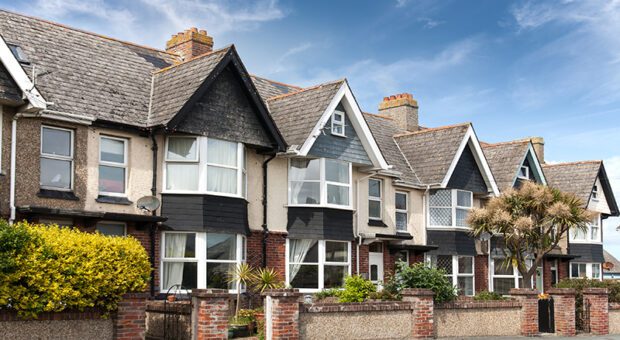- Personal Injury Claims
- Accidents
- Road Traffic Accident Claims
- Accidents At Work Claims
- Holiday Accidents and Illnesses Abroad Claims
- Fatal Accident Claims
- Accidents Public Place Claims
- Injuries
- Eye Injury Compensation Claims
- Poisoning Claims
- Serious Injury Claims
- Sports Injury Claims
- Upper Body Injuries Claims
- Arm and Elbow Injury Compensation Claims
- Hand Injury Claims
- Chest Injury Compensation Claims
- Neck Injury Compensation Claims
- Collarbone Injury Compensation Claims
- Cheekbone Injury Compensation Claims
- Eye Injury Claims
- Shoulder Injury Claims
- Fractured Sternum Compensation Claims
- Spinal Injuries Claims
- Brain Injury Compensation Solicitors
- Compensation for Scarring Claims
- Dislocated Injury Compensation
- Amputation Claims
- Dental Claims
- Horse Riding Accident Compensation
- Personal Injury Lower Body Injuries
- Asbestos Lawyers
- Abuse Lawyers
- Other Injury Claims
- Disputes
- Alternative Dispute Resolution
- General Disputes
- Litigation
- Defamation
- Litigation Funding
- Other Dispute Resolution Services
- Court Actions
- Professional Negligence
- Professional Negligence Claims Against Surveyors
- Professional Negligence Claims Against Architects
- Professional Negligence Claims Against Accountants
- Professional Negligence Claims Against Solicitors
- Professional Negligence Claims Against Financial Advisers IFAS
- Professional Negligence Claims Against Banks
- Clinical Negligence Claims
- Group Actions
- Property & Conveyancing
- Conveyancing Services – Scotland
- Commercial Property Services – Scotland
- Other Property Services Scotland
-
- Family Law
- Immigration Services
- Visas
- Adult Naturalisation Application
- Child Registration Application
- Private Life Application for Adults
- Private Life Application for Children
- Long Residence Application
- Surinder Singh
- Administrative Review
- Fresh Claims for Asylum
- Naturalisation Application
- Stateless Persons
- Travel Documents
- Pre Action Protocol Letter
- Judicial Review
- Immigration Application Review
- Brexit Immigration Advice: Services in Scotland
- Business Immigration
-
- Wills,Trusts & Estates
- Probate & Executry Services
- Business Services
- Careers
A Legal Guide for ‘Buy to Let’ Landlords
July 5, 2018 General
A legal guide for buy to let landlords
Contents
Introduction
Quick Guide
Exemption to Registration
Taking out mortage payments
Paying tax
Legal Requirements
Maintenance
Termanation
The ‘buy to let’ property market has surged recently, offering lucrative returns. However, navigating this market can be complex due to evolving legislation. Success hinges on making the right property purchase, starting with choosing the right market, be it families or students. Consulting local letting agents is crucial to understanding the current market dynamics. Opting for reasonably priced and low-up-keep properties is advisable, steering clear of older buildings to avoid extra maintenance costs.
Quick Guide
Before renting out your purchased property, you should register with the local council to meet minimum legal requirements. Accredited landlords are in higher demand, and achieving accreditation through Landlord Accreditation Scotland enhances your appeal.
For properties with three or more unrelated tenants, secure a House in Multiple Occupancy (HMO) license. It’s required for scenarios like renting to three unrelated students but not for a family of four.
Before obtaining an HMO license, you must meet additional criteria, including property standards, proper management, and being deemed fit and proper by the council. Failure to comply can result in a £50,000 fine. The obtained license is valid for three years, requiring renewal before expiration.
Exemption to registration
There are also circumstances when you don’t have to register with the council to rent your property out and these are as follows:
properties which are holiday lets
properties rented out to family members
properties with resident landlord
properties which provide care services
properties managed by religious orders
After purchasing a property, determine potential rental income to assess landlord expenses against potential returns. This ensures informed decision-making about the viability of becoming a buy-to-let landlord. For additional advice on landlord expenses, consult your local letting agency.
Taking out a Mortgage payments
Securing a mortgage for your rental property is a major monthly expense with various options from different providers. Consulting a mortgage advisor is crucial for securing the best rates, and it’s advisable to avoid variable rates to prevent potential cost increases.
You can delegate rent collections, tenant inquiries, and issues to the estate agency for a fee of 10%-15% of the annual rent.
Property refurbishment is an inevitable expense. Budgeting for these costs is essential, with landlord guidelines suggesting roughly £2,000-£3,000 every 5 years.
Most mortgage providers mandate landlord insurance for comprehensive protection. It’s advisable to secure comprehensive insurance covering both building and contents insurance.
Consider potential periods of property vacancy when calculating profit, allowing for uncertainties like repairs or tenancy changes. Generating income through property letting requires completing a self-assessment form, based on the rental income received.
This includes not only rent but also payments for services like cleaning communal areas. Deductible expenses for tax purposes encompass cleaning fees, letting agent fees, mortgage interests, and other operational costs.
Rental income tax follows the same basis as employment income. For guidelines, on rental income tax visit the HMRC website. Seek comprehensive advice from a qualified accountant or financial adviser for personalised guidance.
Pay income tax – LBTT
You’ll have to pay Income Tax on your rental income. Land and Buildings Transaction Tax is a form of tax that is applied to both commercial and residential properties in Scotland.
The following table will provide you with guidance of how much LBTT you will have to pay on a property you purchase.
Up to £145,000 0%
Between £145,000 – £250,000 2%
Between £250,001 – £325,000 5%
Between £325,001- £750,000 10%
When becoming a landlord, crucial steps include evaluating the property cost and checking LBTT payable. Despite using a letting agent, landlords must ensure legal compliance.
Registering with the local council or seeking accreditation is necessary, with guidelines available from the council. Landlords must also ensure compliance with legal requirements.
Buy to let legal Requirements
When becoming a landlord, it’s crucial to assess the property cost and check the payable Land and LBTT before committing to a purchase. Even if renting through an agent, landlords must ensure legal compliance by registering with the local council or applying for accreditation.
As a buy to let landlord you must ensure that your property meets the Repairing Standard and that, at least the following standards are met:
Smoke alarms will need to be installed throughout the property, normally on each floor;
A gas safety certificate will need to be available within the property;
Water supply must work in accordance with the requirements;
All electrical appliances must be safe for use;
If the property has a coal fire, carbon monoxide detector has to be placed in the room.
As a buy to let landlord, you must provide tenants with your name and address and furnish them with a copy of the tenancy agreement, outlining their rights and responsibilities.
Since December 2017, all new private sector tenancies are Private Residential Tenancies, replacing Assured Tenancies.
You or your letting agency must gather tenant details to ensure legal eligibility. Before the tenancy begins, collect tenant IDs and other necessary information to comply with regulations.
New Landlords must ensure their property has a minimum E-rated Energy Performance Certificate to avoid a penalty of up to £4,000. Register tenant deposits with a scheme, returned at the tenancy’s end unless there is property damage.
In case of disputes, seek advice from independent sources, such as local authorities, housing advice centres, solicitors, or others.
Maintenance
Landlords are accountable for maintaining the property structure and exterior to necessary standards, including issues with drains, roofs, walls, and other factors.
Additionally, carrying out checks at the start and during the tenancy to ensure there are no defects within the property and everything complies with legal requirements and meets the Repairing Standard criteria is essential.
Repairs, maintenance or inspections to the property mean that as a landlord, you will require access to the property. When access is necessary, it is important to remember that you will need to provide your tenants with notice to arrange a suitable time. Usually 24 hours notice is given as a minimum unless in an emergency.
Being the owner of the buy to let properties does not necessarily mean that you can access it whenever you wish to do it.
Ensuring that you provide your tenant with written notice if there is any repairs or maintenance that will need to be carried out within the property will help foster good relations between you and your tenants.
Terminating a tenancy
In order to terminate a tenancy you will need to follow the correct procedure. If the tenancy is a private residential tenancy, it is usually terminated when your tenant either provides you with notice that they wish to terminate the tenancy or they agree to leave the property.
If your tenant wishes to terminate the tenancy, you as a landlord are entitled to a notice period. Generally the tenant will be required to give you at least 28 days written notice or the period of time the tenancy agreement stipulates. T
his should allow you to have enough time to place the buy to let property back on the market to find another tenant.
If on the other hand, you want the tenant to leave the premises you will need to notify them.
If your tenant refuses to leave, provide a minimum 28-day notice before applying for an eviction order, which could extend up to 84 days based on residency or tenancy terms.
You must state one of the permitted grounds for eviction. If the tenant remains after the notice period, obtain an eviction order from the Housing and Property Chamber of the First Tier Tribunal.
Becoming a buy-to-let landlord requires careful consideration of potential expenses and legal requirements. Be prepared for disputes and legal issues, and consult a solicitor for clarity on any aspects you may not fully understand before making decisions.
Conclusion
In conclusion, navigating the realm of buy-to-let landlords in Scotland involves careful consideration of various factors such as rental income, income tax implications, buy-to-let mortgages, capital gains tax, and stamp duty land tax. From projecting rental yields to ensuring compliance with gas safety checks and energy performance certificates, managing rental properties requires a comprehensive understanding of legal obligations and financial responsibilities. Landlords must also weigh maintenance costs, specialist insurance, and service charges against potential rental income and capital growth.
Engaging with mortgage brokers, solicitors, and letting agents can facilitate informed decisions regarding property investment and portfolio management. As the Scottish property market evolves, staying abreast of interest rates, local market trends, and regulatory changes is crucial for successful buy-to-let endeavors. Whether catering to young professionals or seasoned investors, landlords must navigate the intricacies of property ownership with diligence and prudence to build and maintain a thriving portfolio in Scotland’s dynamic real estate landscape.
Contact Us
Speak to one of our experience legal team, and get responsive, clear, and straightforward legal advice and support.

















